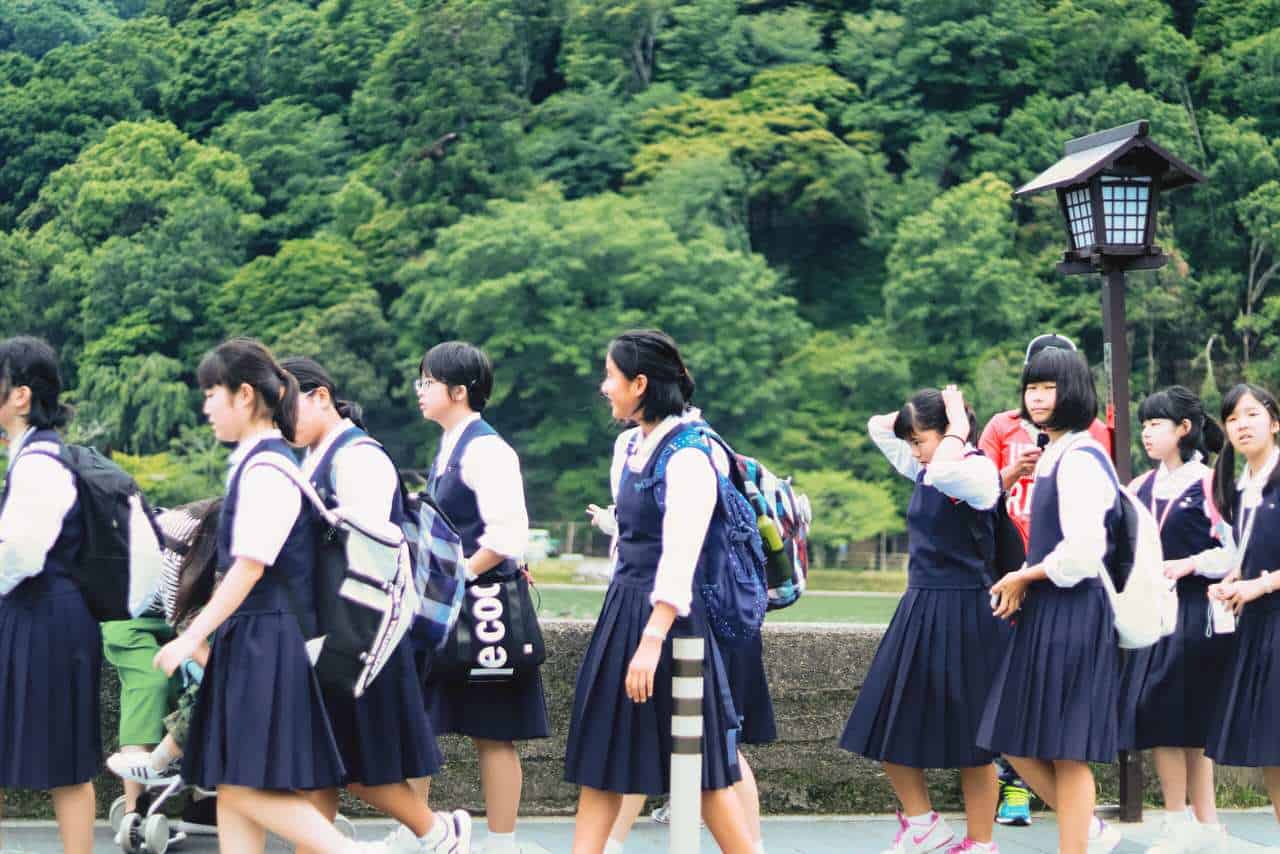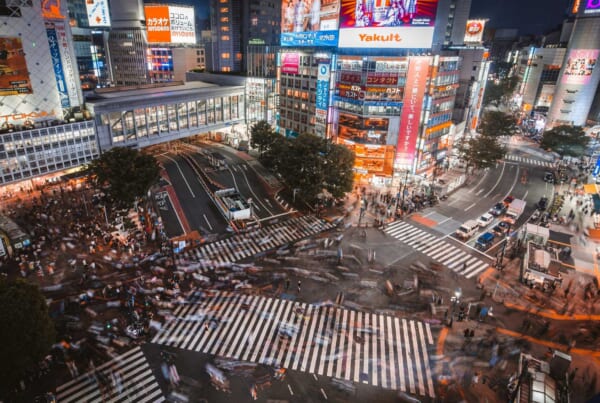Although the legal framework of the current Japanese education system dates back to the postwar constitution, most educational structures, which were inspired by Western models, had already been adopted since Meiji era, during a period when emphasis on public education was part of the framework of the country’s modernization.
Educational Stages in Japan: From Kindergarten to University
Without taking into account preschool or higher education, the Japanese education system requires students to spend a total of 12 years of which nine are compulsory, similar to Western education systems. The curriculum is nationally standardized and classes are usually held from Monday to Friday, although there are schools that also hold classes on Saturdays.
Pre-school Education
From early childhood to the beginning of primary education there are several options. From the age of 2 months and up to 5-6 years old, there are nursery schools, known as hoikusho (保育所). Since they’re not exclusively educational centers, they’re licensed by the Ministry of Health, Labour and Welfare. As their name suggests, their function is the same as in the West when it comes to having a place to care for children when parents aren’t available. Business hours will depend on the location. From the age of 3, children can access kindergartens, called yochien (幼稚園). These are educational centers where the aim is preparatory training for elementary school.
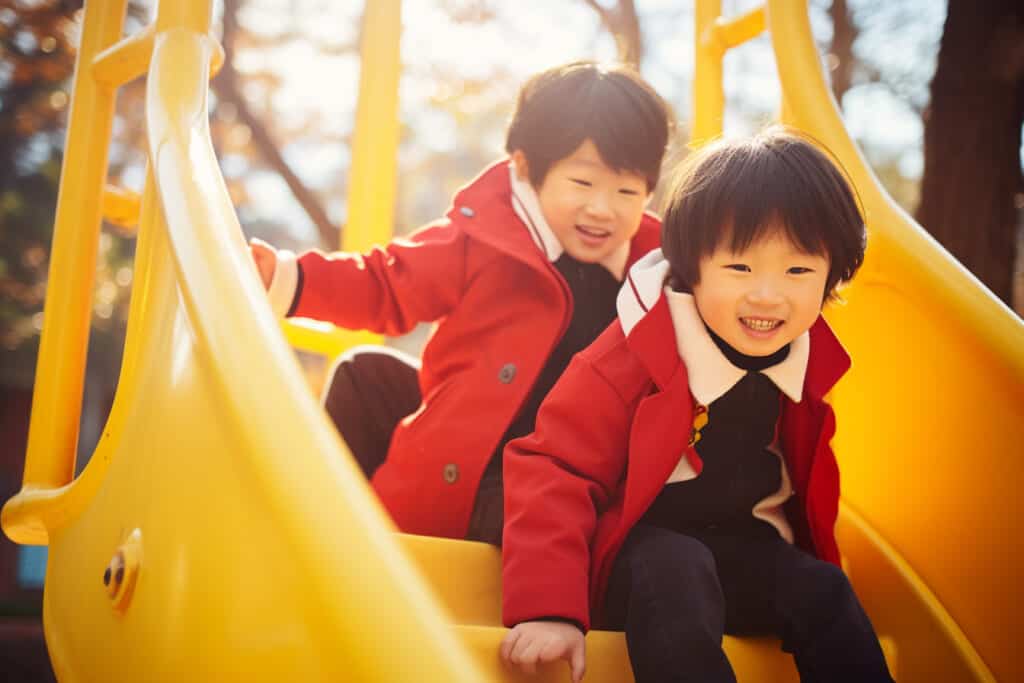
Depending on each center, there’s also the possibility to start studying other languages or extracurricular courses. Although these institutions depend of the Ministry of Education, they’re not considered part of compulsory education. On the other hand, since 2006 there are also centres that integrate both functions described above, called nintei kodomoen (認定こども園), but they’re still in the minority compared to the other two.
Elementary Education
Elementary education, called shogakkou (小学校), is the first stage in compulsory education in Japan. It consists of six levels for students between the ages of 6-7 and 11-12. The vast majority of elementary schools are public, and students are generally assigned to them based on their home address. Under this system, teachers rotate periodically among schools in each school district in an attempt to ensure the same level of education in all schools.
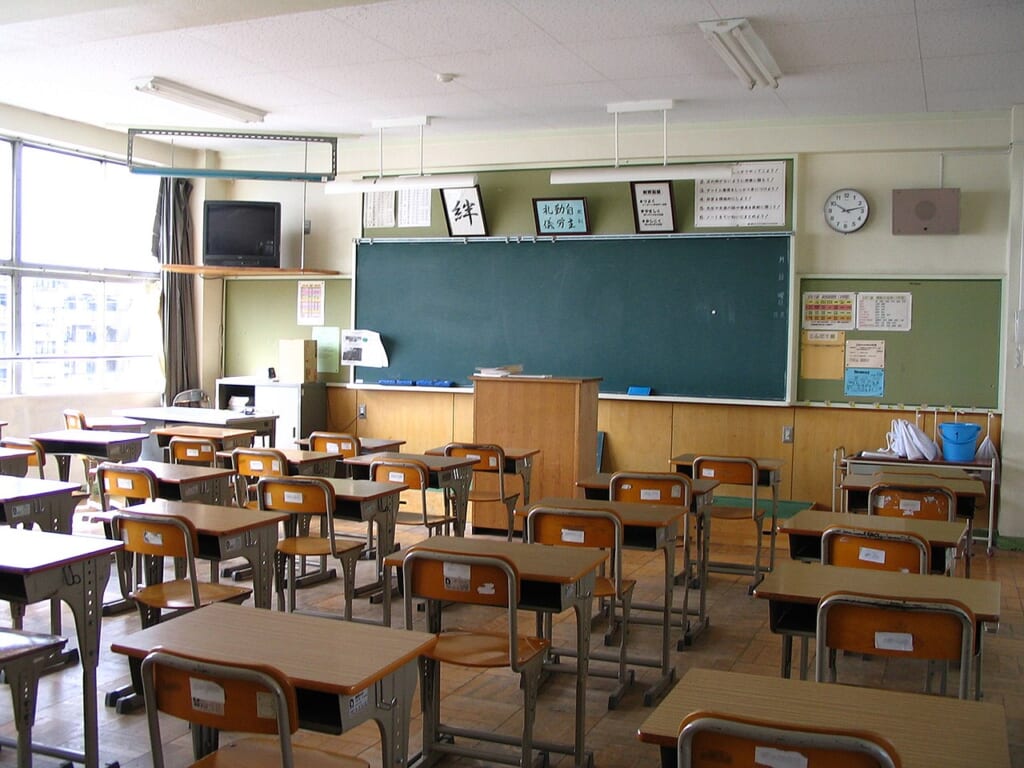
Compulsory Secondary Education
This level, as its name suggests, is part of the nine years of compulsory education and is known as chugakko (中学校), for students from 12-13 to 14-15 years old. If the institution is public, there’s no need to pass an entrance exam to enter junior high school, as is the case in most private secondary schools. There are a few exceptions in the case of private institutions that integrate primary and secondary, where students simply move on to the next level. Teacher rotation system works the same as in primary school.
High School
Upon completion of compulsory education, the vast majority of students continue on to high school, called kotogakko (高等学校) but typically shortened to koko (高校). Since this level is no longer compulsory, both public and private institutions hold entrance exams. Students must choose a high school within their school district’s listings, which ranks schools in order of relevance, based on each institution’s ability to send its graduates to Japan’s best universities. Entrance exams for public high schools are all held on the same day, so students can only take one for each school year. But in the case of private high schools, students can apply to as many as they wish.
As for high school types within the Japanese education system, they’re usually classified into three broad categories:
- Academic high school: elite institutions where top academic performance students can enter, aiming to tackle admissions to the best universities in the country.
- Vocational high school: institutions focused on professional training, generally of a technical nature with programs related to civil, electrical, or mechanical engineering. But there are also schools where it’s possible to study subjects related to commerce (marketing, accounting, etc.), programming, biotechnology, or culinary arts.
- Global high school: institutions that offer a mixed system between academic and vocational high schools, where students have more freedom to choose different subjects on a credit basis, inspired by the public high school system in the United States.
There’re also evening or part-time high schools, called teiji sei (定時制), as well as distance learning high schools, called tsushin sei (通信制) for those who, for one reason or another, can’t attend regular high schools.
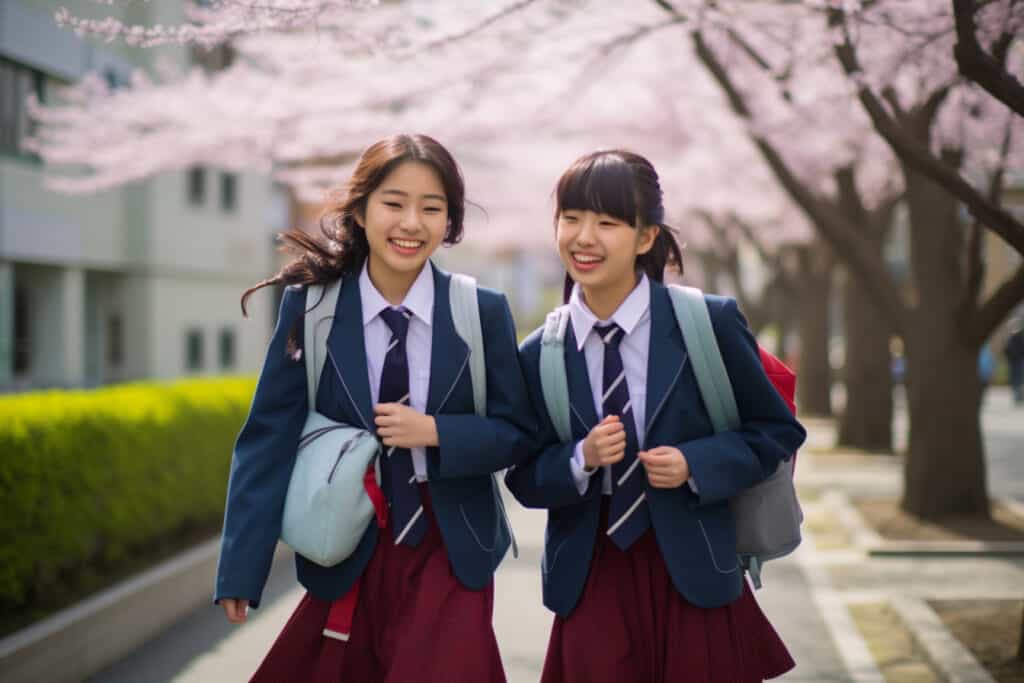
On the other hand, for those who do not wish to enter high school, there’s the option of applying to a technical college, called koto senmon gakko (高等専門学校), usually abbreviated as kosen (高専). These programs last around four to five years and it’s possible to enroll from 15 years old onwards. They’re a middle ground between secondary and higher education, and their focus is providing job opportunities within the Japanese industrial sector.
Intensive Schools or Supplementary Education
Parallel to the above, there are private schools dedicated to supplementary lessons, called gakushu juku (学習塾) or simply juku (塾). Their primary purpose is usually to prepare students for junior high school, high school or college entrance exams, but they also serve as reinforcement for students struggling to pass quarterly exams in school. The number of these schools has increased considerably in recent years as academic competitiveness has increased, due to the fact that regular education isn’t enough to gain access to the best high schools and universities in the country. Juku attendance is so widespread that several local governments include subsidies for low-income families in order to reduce as much as possible the educational gaps resulting from socioeconomic status.
Higher Education
Most institutions of higher education consist of universities, called daigaku (大学) with four-year curricula for undergraduate students and one-or-two-year curricula for graduate students. Academic prestige decides the ranking of both public and private universities.
Secondly, there are colleges of higher education, called tanki daigaku (短期大学), which offer two or three year curricula. These are institutions especially aimed at women, 90% of the student body, with studies that mainly have to do with humanities or home economics.
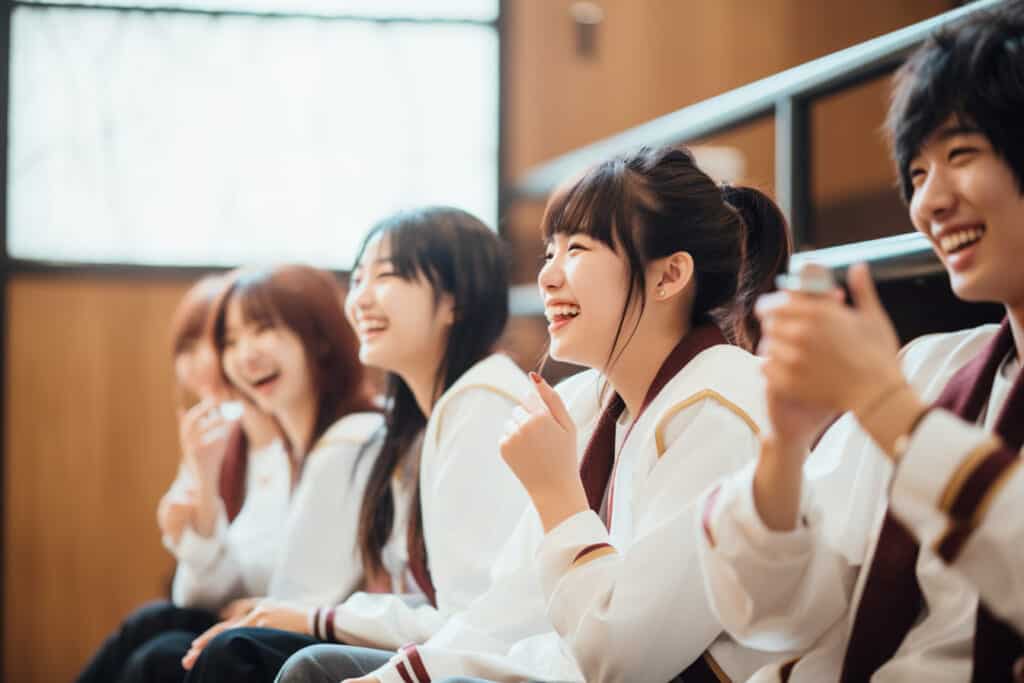
Lastly, there are professional training colleges, called senmon gakko (専門学校) or senshu gakko (専修学校). The former requires to finish high school first, while the latter is available after completing compulsory education. In recent years, the number of students with university degrees seeking additional skills or to specialize in certain areas are starting to increase. Depending on the case, there are occasions when certain universities recognize credits earned at training colleges if a student wishes to transfer from one institution to another.
What are the Most Important School Exams in Japan?
Regular exams in the school calendar are spread over three terms. It should be noted that elementary school students don’t have exams until 4th grade. After that, exams for each subject take place in the middle and at the end of each trimester. But the third trimester, which is usually somewhat shorter, doesn’t have mid-term exams, only final exams.
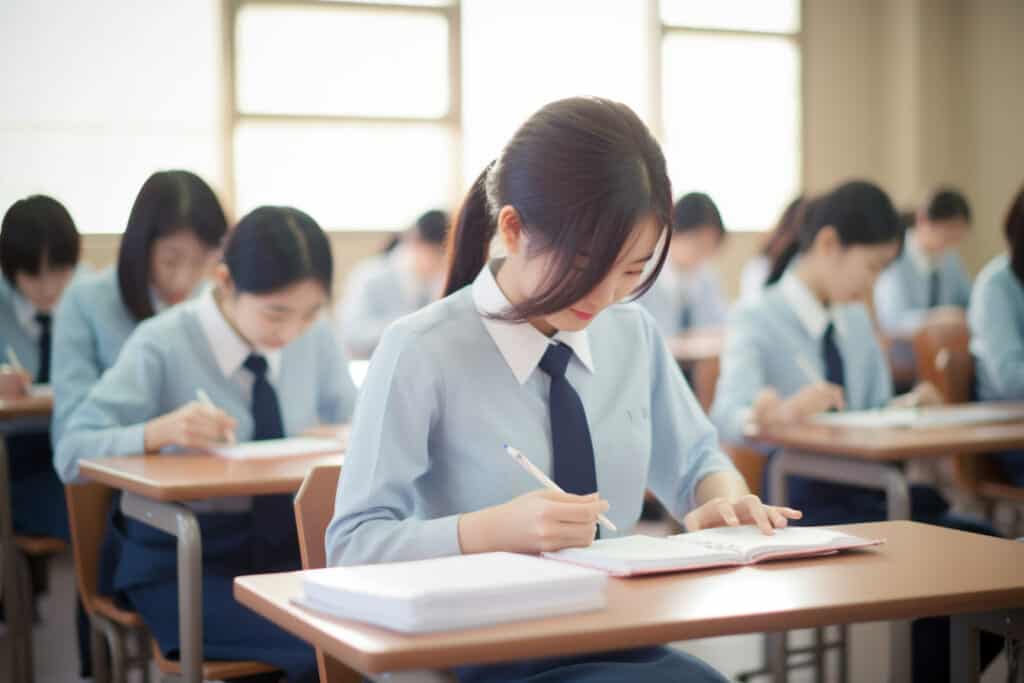
Additionally, there are entrance exams for middle school, high school and university. Of these three, probably the most critical for the academic future are high school entrance exams, which is why the study period for these exams is popularly known as juken jigoku (受験地獄) or entrance exam hell.
What are the Educational Costs in Japan?
Educational costs vary considerably depending on whether we’re talking about public or private education. In case of public education, tuition and textbooks are free for elementary and junior high school students, while in high school, tuition is only free for students from low-income families.
In general, the estimated cost for each person, over the approximately 19 years from preschool to university, will be at least 10 million yen (about 73,000 US dollars) if they study only in public schools. If we’re talking about private schools, then the expenditure will be from 20 million yen (about 146,000 US dollars). According to data from the latest survey from the Ministry of Education for 20211, this would be the average annual costs for each stage:
- Preschool
- Public: 165,126 yen (about 1,060 US dollars) per year, of which:
- Tuition: 61,156 yen.
- School lunch: 13,415 yen
- Extracurricular activities: 90,555 yen
- Private: 308,909 yen (about 1,990 US dollars) per year, of which:
- Tuition: 134,835 yen
- School lunch: 29,917 yen
- Extracurricular activities: 144,157 yen
- Public: 165,126 yen (about 1,060 US dollars) per year, of which:
- Elementary school
- Public: 352,566 yen (about 2,270 US dollars) per year, of which:
- Tuition: 65,974 yen (covered by the government)
- School lunch: 39,010 yen
- Extracurricular activities: 247,582 yen. Of which:
- Supplementary lessons: 81,158 yen
- Private: 1,666,949 yen (about 10,710 US dollars) per year, of which:
- Tuition fees: 961,013 yen
- School lunch: 45,139 yen
- Extracurricular activities: 660,797 yen. Of which:
- Supplementary lessons: 273,629 yen.
- Public: 352,566 yen (about 2,270 US dollars) per year, of which:
- Middle school
- Public: 538,799 yen (about 3,460 US dollars) per year, of which:
- Tuition: 132,349 yen (covered by the government).
- School lunch: 37,670 yen
- Extracurricular activities: 368,780 yen. Of which:
- Supplementary lessons: 250,196 yen
- Private: 1,436,353 yen (about 9,230 US dollars) per year, of which:
- Tuition fees: 1,061,350 yen
- School lunch: 7,227 yen
- Extracurricular activities: 367,776 yen. Of which:
- Supplementary lessons: 175,435 yen.
- Public: 538,799 yen (about 3,460 US dollars) per year, of which:
- High school
- Public: 512,971 yen (about 3,300 US dollars) per year, of which:
- Tuition2: 309,261 yen (covered by the government for low-income students until 2024; see section notes).
- School lunch3: –
- Extracurricular activities: 203,710 yen. Of which:
- Supplementary lessons: 120,397 yen
- Private: 1,054,444 yen (about 6,780 US dollars) per year, of which:
- Tuition2: 750,362 yen.
- School lunch3: –
- Extracurricular activities: 304,082 yen. Of which:
- Supplementary lessons: 171,149 yen.
- Public: 512,971 yen (about 3,300 US dollars) per year, of which:
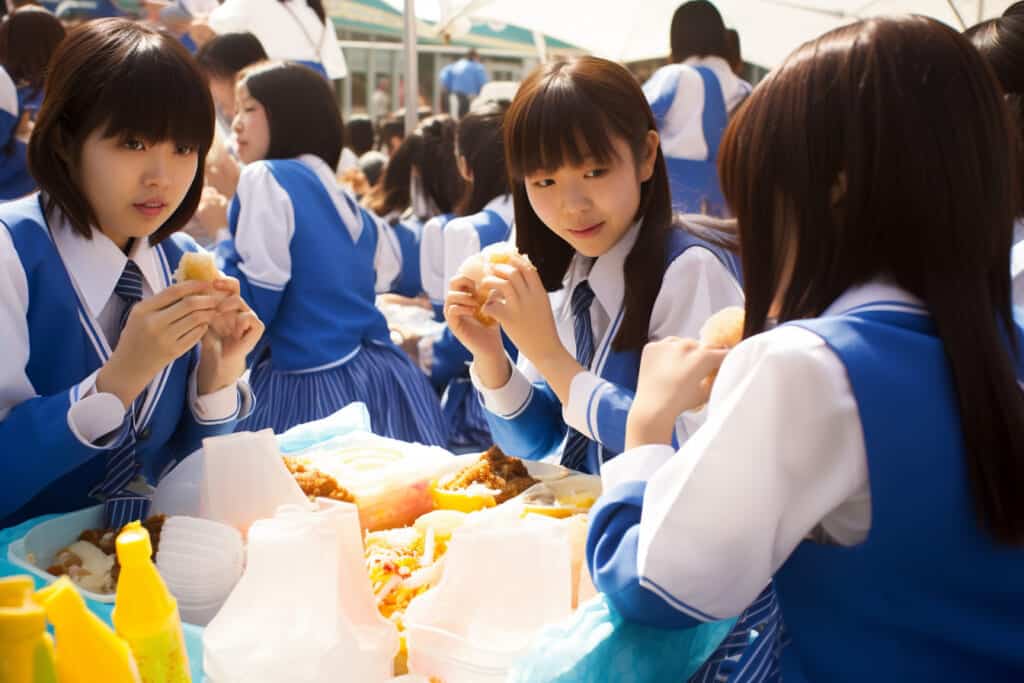
1 As of 2019, the government subsidizes the monthly preschool fee up to 25,700 yen per month.
2 Starting from the 2024 school year, the Tokyo Metropolitan Government approved the full subsidy of high school tuition for all students in public institutions residing in Tokyo, regardless of their income level. For private institutions, the subsidy covers up to 475,000 yen. Up to that moment, high school tuition was covered by the Metropolitan Government for all households whose annual income did not exceed 9.1 million yen.
3 During the course of compulsory education in elementary and junior high school, school expenses include lunch from the school menu, designed by nutritionists. From high school onwards, lunch is up to each student.
Which Elements are Specific to the Japanese Education System?
- Japanese academic year begins in April and ends in March of the following year.
- The existence of elaborate ceremonies at the beginning and end of the school year.
- The need for exams to enter middle school and high school.
- Students must not intervene during class but remain listening silently.
- Membership in at least one club for extracurricular sporting or cultural activities is almost obligatory.
- In schools, the students themselves are responsible for cleaning the classrooms and other facilities.
- Students don’t switch classrooms for different subjects, the teachers or professors go to each classroom instead.
- Students don’t repeat school years even if they fail several subjects.
It’s clear, then, that although the West is the main source of inspiration in the development of the Japanese education system, Japanese idiosyncrasies are still manifested through various distinctive elements.


